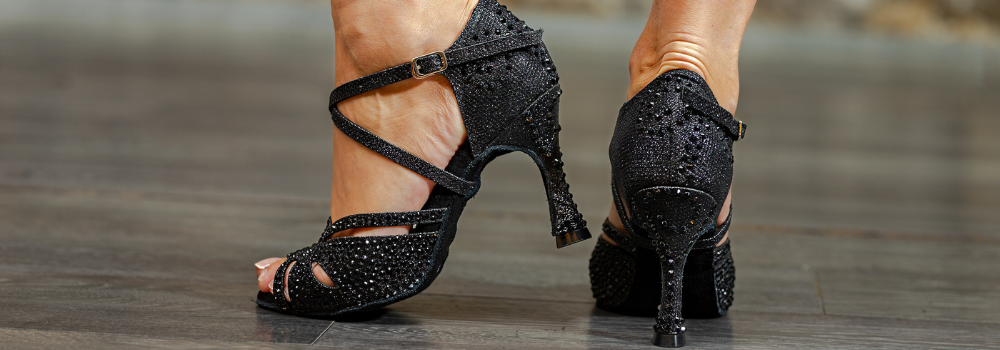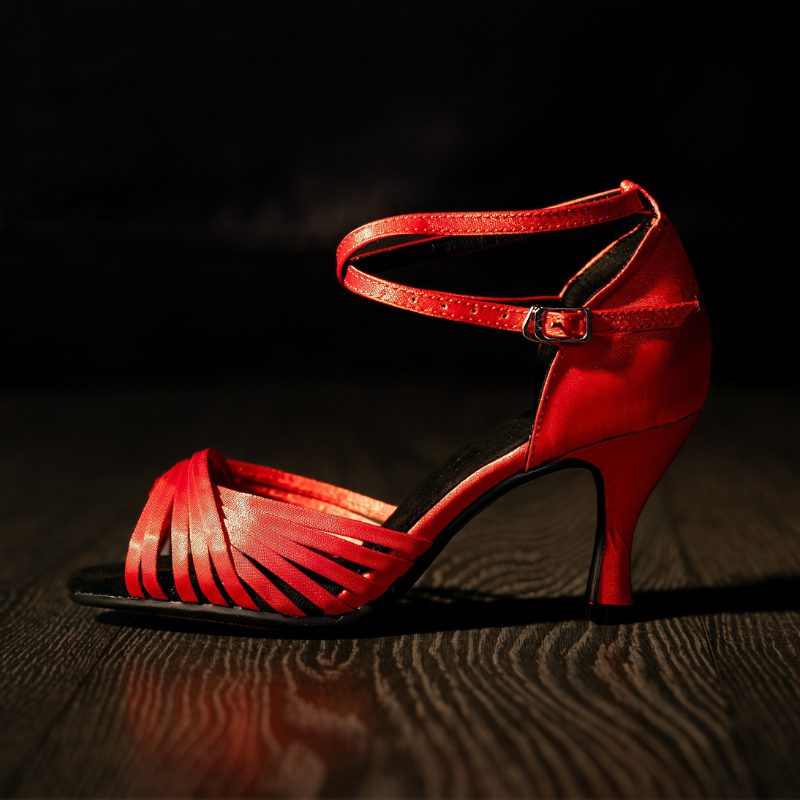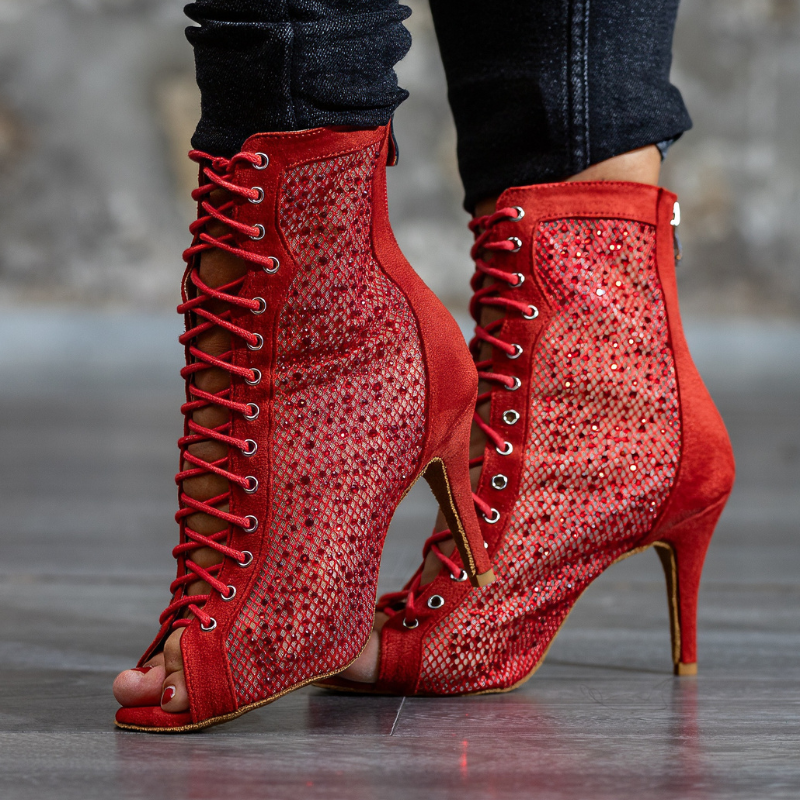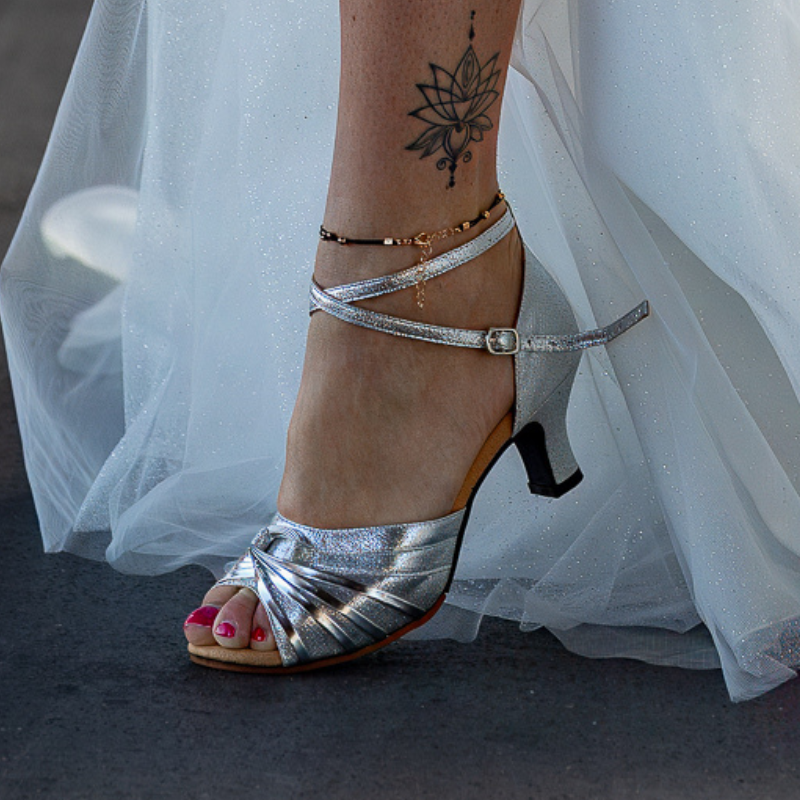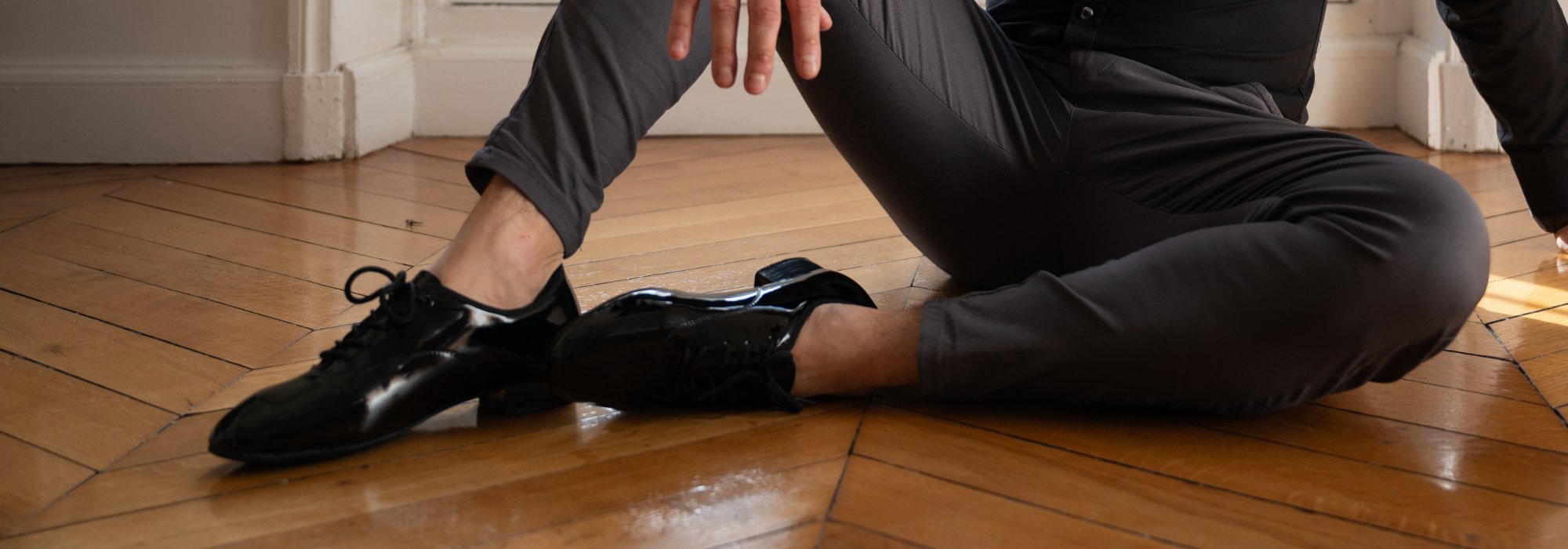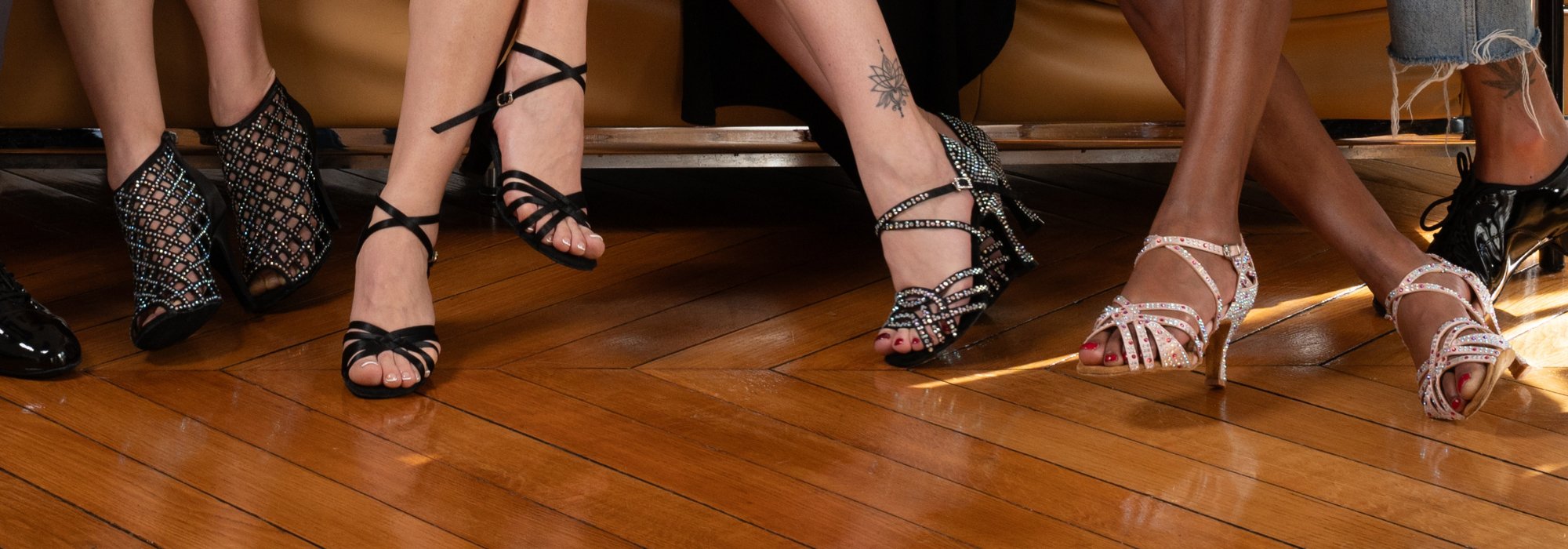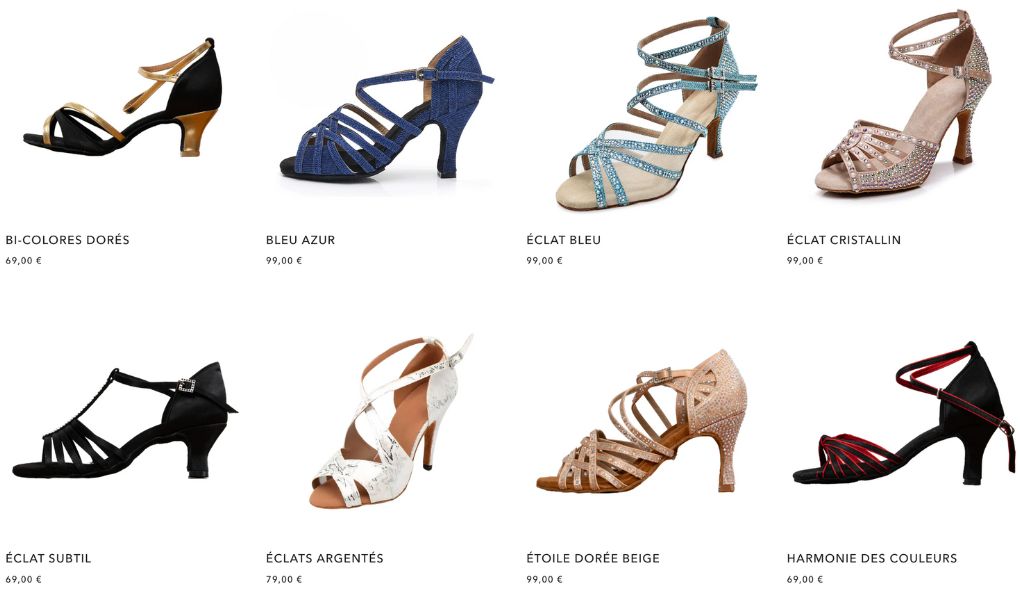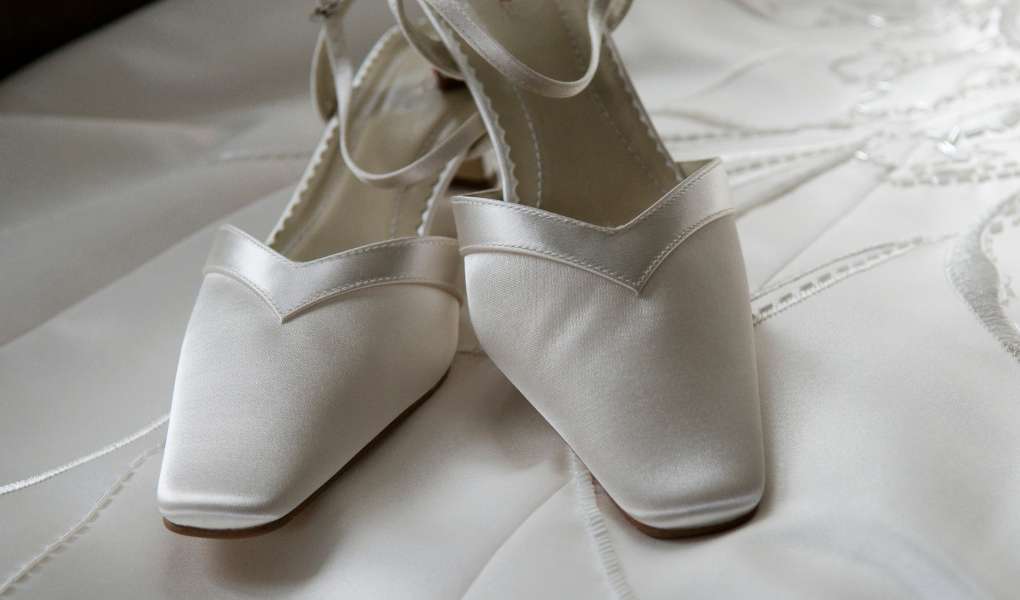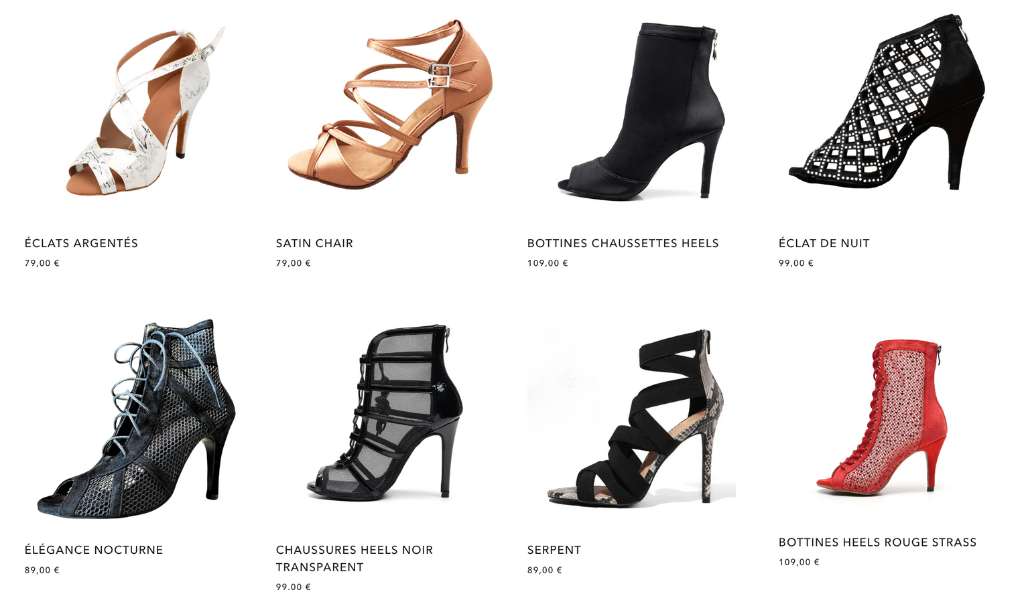Which shoes are right for learning to salsa dance?

Are you new to salsa and wondering which shoes to choose to feel comfortable on the dance floor? Are you already passionate about this dance but looking to perfect your moves with the right pair? This article will guide you step by step!
Dance shoes with 7.5 cm heels are an excellent compromise for combining elegance, stability and comfort. This heel height makes it easy to rock back and forth, and to transfer your weight from one foot to the other without imbalance, even during fast movements and rotations.
Whether you're a beginner or an experienced dancer, choosing the right shoes is essential to progress and get the most out of every step.
In this article, you will learn:
- Why special shoes are essential for salsa dancing.
- Models to suit all types of salsa and your level.
- Our tips for making the right choice and shining on the track!
Ready to find your perfect pair and get dancing?
Why do you need shoes that are suitable for salsa dancing?
1.specific movements
Salsa is a demanding dance that combines fast rotations, fluid movements and constant weight changes. These movements require shoes designed for :
-
Supporting flexibility: A flexible sole allows the foot to move naturally without constraint.
-
Controlled glide: suede or leather soles allow easy pivoting without losing balance.
- Ensuring stability: A good shoe structure helps maintain correct posture during fast movements.
2 Limiting the impact of bad shoes
Wearing unsuitable footwear can quickly slow your progress and cause physical discomfort.
Here are the main risks:
A.Frequent injuries
- Sprains due to excessive or insufficient grip.
- Blisters or pain caused by poor fit.
B.Technical difficulty
- Impossible to execute spins correctly.
-
Unstable or unbalanced posture that increases fatigue during sessions.

What type of salsa shoes should I choose?
Choosing the right salsa shoes is a key step in guaranteeing comfort, stability and performance on the dance floor. Depending on the type of salsa you practice and your level, different types of shoes can meet your needs.
1. Cuban salsa shoes
La Cuban salsa is characterized by circular movements and rapid footwork, often close to the ground. Interaction with the partner is essential, requiring fluid, stable movements.
Suitable footwear:
-
Low heels (2 to 4 cm) : they provide extra stability for fatigue-free circular movements.
-
Grip soles in leather or rubber : They are suitable for a wide range of surfaces and ensure good fluidity.
-
Flexible structure : They follow the rapid, natural transitions of the feet.
Recommended models: Medium-heeled shoes (Heels)
These are versatile, often between 5 and 7 cm high. What's more, they're suitable for beginner to intermediate dancers.
Advantages :
-
Comfort for long sessions.
-
Good stability for circular movements.
-
A compromise between style and practicality.
2. Puerto Rican salsa shoes
La Puerto Rican salsa is often danced in a line, with frequent spins and precise movements. The posture is straight and elegant, with great emphasis on timing.
Suitable footwear :
-
Medium heels (4 to 6 cm) : Maintain an upright posture while facilitating rotation.
-
Smooth suede soles: Essential for spinning on smooth wood floors.
-
Lightweight, snug-fitting shoes: Improve precision and reduce fatigue.
Recommended models: Thin-heeled shoes (Stilettos)
Heels are generally 7 to 9 cm.
Advantages:
- Accentuate a graceful, slender posture.
- Perfect for performances and social events.
Beware, they are best reserved for experienced dancers who have mastered spins and balances.
3. Colombian salsa shoes
Renowned for its fast movements and intricate footwork, Colombian salsa demands great reactivity and control.
Suitable footwear :
-
Higher heels (up to 8 cm): help maintain balanced posture, even when moving quickly.
-
Soft soles: Indispensable for smooth transitions between complex steps.
-
Firm structure: supports the ankles while remaining comfortable.
Recommended models : Dance boots
These shoes cover the ankle and offer excellent support for complex choreography.
Advantages :
-
Optimum support for quick pivots.
-
Unique design combining aesthetics and functionality.
They are ideal for beginners looking for comfort and stability.
4. Salsa shoes online
Line salsa requires precise movements and mastery of complex rotations. It is often danced on an imaginary line.
Suitable footwear :
-
Low to medium heels (2 to 6 cm): For good balance during rapid changes of direction.
-
Ultra-smooth soles (suede or leather): Facilitate impeccable "spins" without loss of grip.
Our suggestions: Wedding shoes for salsa
Advantages:
-
Long-lasting comfort, ideal for long evenings.
-
Refined design to shine on the track.
These are perfect for events or competitions.

What shoes should I wear to a salsa class?
During your first salsa trial class, the choice of shoes is crucial to guarantee comfort, safety and fluidity of movement.
Here are a few recommendations for all levels, whether you're a beginner or an expert.
1. Characteristics of the ideal shoes for a salsa class
To get off to a good start, choose shoes that meet the following criteria:
-
Soft, smooth soles: for effortless pivoting and turning. Avoid rubber soles, which grip too tightly and can impede movement.
-
Optimum support: snug-fitting shoes with straps or laces to prevent slipping.
-
Comfort: Choose padded shoes to reduce fatigue during long sessions.
-
Lightweight: Lightweight shoes allow greater freedom of movement.
2. Shoes for beginners
If you're just starting out, there's no immediate need to invest in specialized dance shoes.
Here are a few alternatives:
-
Town shoes with smooth soles: Moccasins or ballet flats may be suitable temporarily.
-
Worn sneakers: If they have slightly slippery soles, they may be an option for a first course.
-
Dance sneakers: More comfortable and flexible than classic sneakers.
3. For regular dancers
Once you're taking regular salsa classes, investing in specialized footwear becomes essential to improve your technique and avoid injury.
Women:
-
Choose Latin sandals with 5 to 7 cm heels for greater elegance and spin control.
-
If you're less comfortable with heels, choose shoes with low heels (2-4 cm).
Men's:
-
Choose leather or suede dance shoes with low heels (1-2 cm) or Cuban heels (up to 4 cm).
-
These shoes offer an excellent combination of stability and flexibility.
What should I do if I don't have any dancing shoes yet?
Don't panic, here are a few tips for improvising during your first lessons:
-
Tip 1: Make sure your shoes allow you to glide lightly. If they are too sticky, apply a thin layer of talcum powder to the bottom of the soles to reduce friction.
-
Tip 2: Make sure your feet are well supported. Open shoes or shoes that are too large can lead to pain or accidents.
- Tip 3: Order online from a site with a flexible return policy. Once you've received your salsa shoes, take the time to walk, swivel and simulate dance moves to check that they fit properly.
If they don't suit you, you can always return them within 14 days of delivery. However, at SalsaNueva, we guarantee the impeccable quality of our salsa shoes.
Why invest in salsa shoes?
While classic shoes may be fine to start with, here are the benefits of investing in salsa shoes:
-
Better posture: adapted heels help align your body for smoother movements.
-
Injury reduction: The snug fit and flexible insoles protect your joints during rotation and rapid movement.
-
Optimized performance: shoes designed for salsa promote precise technical execution and classier style.

Take your first steps in SalvaNueva shoes!
We've come to the end of this article! Now you know which shoes are best for learning to dance salsa, and how important they are for different styles and levels of experience.
So, are you ready to shine on the dance floor?
Don't let your choice of shoes hold you back from progressing or having fun. Whether you're a beginner or an experienced dancer, we've got you covered.
At SalsaNueva, we offer a selection of selection of salsa shoesspecially designed to meet your Latin dance needs.

